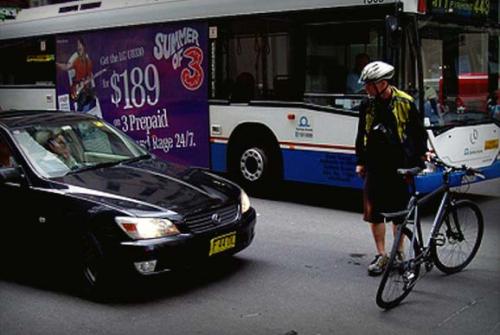I’m reading Daniel Simons’ and Christopher Chabris’ book, The Invisible Gorilla. You’ve probably seen their video as it is one of the best-known modern experiments in psychology and a YouTube sensation with over 11 million hits.
The video shows two teams of three students passing basketballs. As a test, viewers are asked to silently count the number of passes of one team while ignoring the passes of the other. Most people get the right answer but half of the people do not see a gorilla walk into the middle of the group, turn and face the camera for 9 seconds, beat its chest, and walk off. How is this possible? What made the gorilla invisible?
 This error of perception comes from lack of attention to an unexpected object. “When people devote their attention to a particular area or aspect of their visual world, they tend not to notice unexpected objects, even when those unexpected objects are salient, potentially important, and appear right where they are looking.” This phenomenon, called “inattentional blindness,” is not why Simons and Chabris wrote the book. Rather, it was the surprise people showed when they realized what they had missed.
This error of perception comes from lack of attention to an unexpected object. “When people devote their attention to a particular area or aspect of their visual world, they tend not to notice unexpected objects, even when those unexpected objects are salient, potentially important, and appear right where they are looking.” This phenomenon, called “inattentional blindness,” is not why Simons and Chabris wrote the book. Rather, it was the surprise people showed when they realized what they had missed.
I’ve seen this look of surprise many times from my bicycle. It happens most often at intersections where cars are waiting to turn into or across my lane. Drivers are expecting to see fast, bulky, 2,000 pound objects and miss me, a slow, relatively slender, 200 pound object. That is they miss me until I wave or shout a greeting or change my line or speed. Then I get a startled look of chagrin that reveals an awakening to what British cyclists call SMIDSY – Sorry, mate, I didn’t see you.
There are three other important takeaways for bikers from Invisible Gorilla. First, wearing bright colors and reflective clothing makes it easier for you to be seen by drivers who are looking for you but does not resolve the looking-but-failing-to-see problem. Simons further tested selective attention using a red gorilla suit, and Steve Most, now a professor at the University of Delaware, created a computerized version of the gorilla experiment substituting a red cross moving through a black-and-white setting. Making the unexpected object as distinctive as possible still yielded a 30 percent failure rate.
Have you experienced drivers with inattention blindness? What tips do you have for being seen on the road?










